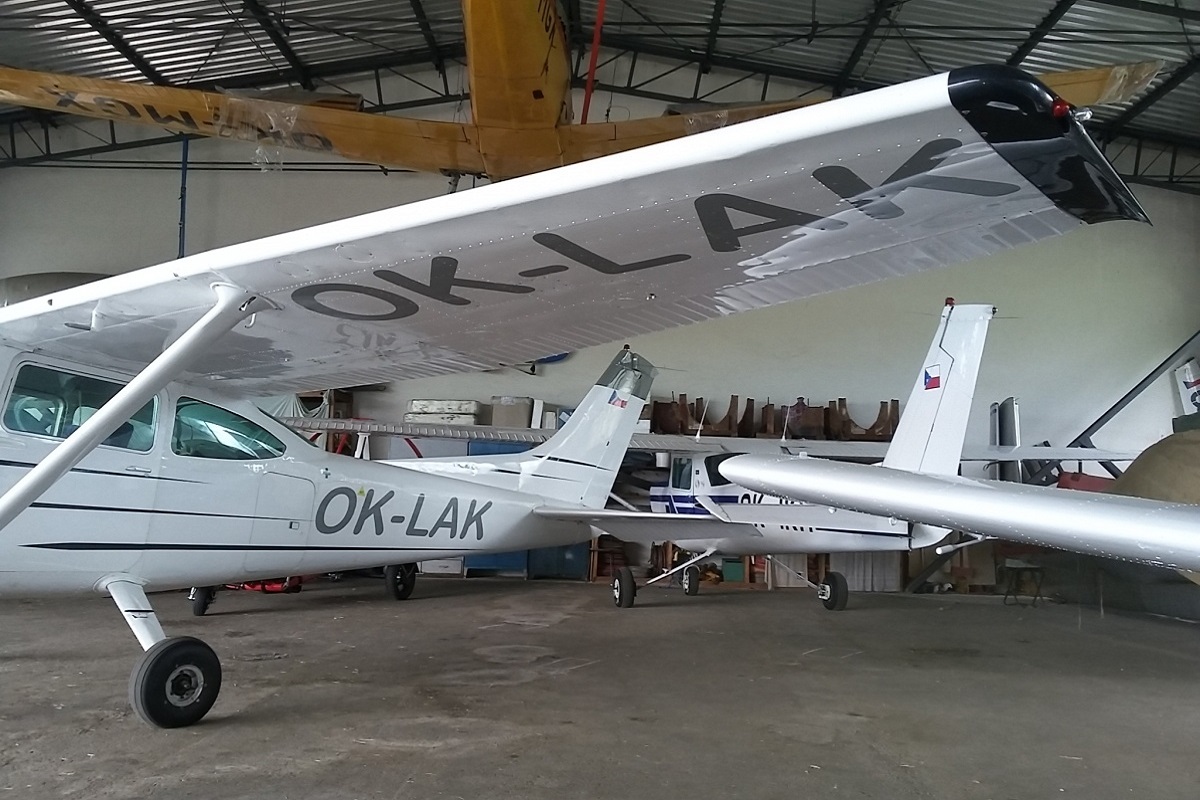Perhaps anyone who has ever been on an airplane day or just watching airplanes in the sky has noticed a sequence of letters, a graphic symbol (linker), and figures located visibly on the hull and wing of the plane. It is a registration (sometimes also a cognitive) mark of the airplane, which determines the nationality, year of purchase, type of machine or the machine of the given owner. Its location and country code are governed by international regulations established by the International Civil Aviation Organization (ICAO). In the Czech Republic, the matriculation is issued and registered by the Civil Aviation Authority, located in Prague, which falls under the Ministry of Transport.
The civil aircraft registration marks in the Czech Republic begin with a pair of OK letters stating the international code of our country. Behind them, one of these four combinations follows:
- hyphen and three letters
- hyphen and three letters, space and two digits (ultralight aircraft)
- hyphen and four digits (balloons and gliders)
- A letter and a hyphen three digits (gliders)
The letters behind the hyphen then provide another three important data about the aircraft. The first shows the year of purchase, the second type, and the last order of the owner.
Shortcut History OK
After the end of the First World War, it was clear that the issues of international air traffic had to be addressed and therefore air transport was also the subject of the Paris Peace Conference. After the seven months (13. October 1919), the 27 states signed the so-called Paris Convention, which also included rules for the designation and registration of civil aircraft. Elected was the five-character capital letter of the Latin alphabet. The designation contained a one-letter national code, followed by a hyphen and a group of four letters, at least one of which was a vowel. This designation was based on call signs used for radio communications under the 1912 London Convention, where the Czech country code has its roots. The letter B was then assigned to Czechoslovakia. B was followed by letter B and a three-letter code, the meaning of which is almost identical to the current one, the difference was only in the order of importance of the letter (type of aircraft, year of registration in the register and ranking in the owner’s fleet). The first CSA aircraft, such as Aero A-14 or Hansa C. I Brandenburg, therefore had L-BARA, L-BARB, L-BARC, L-BARD and L-BARW matriculation.
The matriculation of CSA aircraft and all other Czechoslovak civilian aircraft was rebuilt to OK only in 1930 on the basis of a decision of the International Civil Aviation Commission of 1929, which was based on previously valid radiotelecomunikační call signs, which was OK for Czechoslovakia (“OTO KAREL”). and OL. These came from the international conference on radiotelegraphy in Washington, DC, held in 1927. ITU carried out a review of international radio traffic regulations including call signs and subsequently amended the rules for aircraft matriculation in the form of the current regulations.
In 1993, the Czech and Slovak Federative Republic was divided, which also resulted in the change of the ICAO codes of the newly established states. The Czech Republic then retained the current OK country code as the successor state, while Slovakia was assigned a new international designation of the OM country.
Legend
Around the time of our current ICAO code of the country, there is an entertaining but untrue reputation, or rather a story about the meaning of a pair of OK letters. The story tells us that the Czechoslovak delegation arrived late at the decisive conference and came up with the opportunity to get the desired CS. This abbreviation was enough for them to loot the Portuguese in honor of King Charles (Charles I of Portugal, 1863-1908). Our group therefore had to make a comeback, and in a short time to come up with a new designation of the country that eventually became the head of the delegation. This was supposed to be Otakar Koudelka or perhaps Otakar Kašpar, hypothetically related to the pioneer of Czech aviation by Jan Kašpar. According to this rumor, the Spaniards also finally agreed with the Portuguese, because Spain’s code is the EC and CS has Portugal.
source:
http://www.avemodel.estranky.cz
http://cs.wikipedia.org/wiki/Imatrikulace_(letectví)

